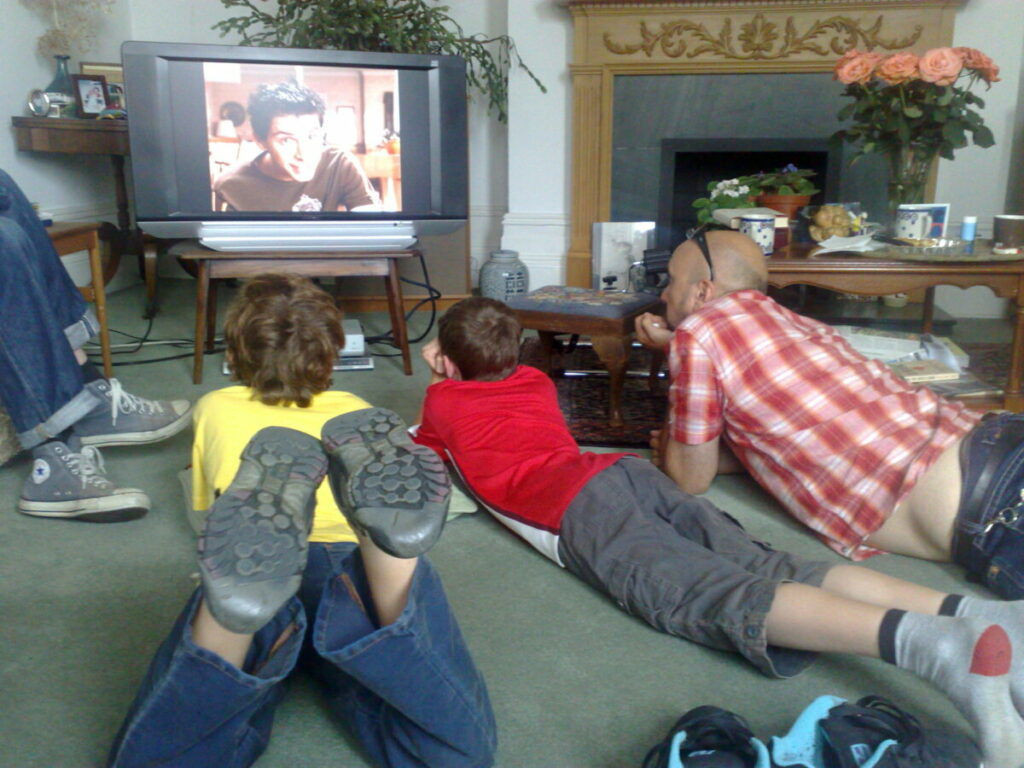Growing up in Massachusetts during the 1950s and early 1960s was a unique experience, especially when it came to after-school entertainment. For many school kids, including myself, lunchtime wasn’t just about sandwiches and milk; it was also about tuning into Big Brother, a local children’s television program. In a time when television itself felt like a new and exciting Street Light Street Light illuminating our homes, this show was a daily ritual. We’d race home from school, those of us lucky enough to live nearby, and by 12:15 pm, we were glued to the screen, ready for “Big Brother.”
The host, Bob Emery, was an unlikely figure for a children’s show. He was middle-aged, with a receding hairline, a bit plump, and wore glasses – more like a kindly uncle or grandfather than the energetic older brother figure you might expect. He would sit in a rocking chair in front of a fireplace, surrounded by a group of about a dozen children, whom he affectionately called his “small fry,” ranging from preschoolers to early elementary age. Each episode began with him singing The Grass is Always Greener (in the Other Fellow’s Yard) while strumming a ukulele. Even as a young “small fry” myself, I sensed that Bob Emery had a special way of connecting with his audience. He spoke to us, not down to us, a quality that resonated deeply.
Bob Emery’s career in children’s broadcasting was remarkably long, stretching back to 1921 when he entered radio at the young age of twenty-four. Starting in Massachusetts, he later moved to New York, where he expanded his reach. In New York, he hosted The Small Fry Club for the DuMont Television Network, a show very similar in format to the one he later brought back to Boston in 1952. By this time, George Orwell’s 1984 had given the term “Big Brother” a somewhat ominous connotation. However, for Emery, “Big Brother” was already a well-established brand, a comforting and familiar moniker along with his endearing term for children, “small fry.”
The opening theme song, The Grass is Always Greener, a popular tune from 1924, was carefully chosen by Emery. Its message of contentment and gratitude, of appreciating what you have rather than envying others, was a recurring theme in his show. He also consistently used his platform to promote the Jimmy Fund, a local charity dedicated to cancer research and treatment for children. He encouraged his young viewers to donate their spare change, instilling values of generosity and thankfulness, reinforcing the positive message of his theme song.
Compared to today’s fast-paced, visually dynamic children’s programming, Big Brother was undeniably static. Emery rarely moved from his rocking chair. Yet, in the early 1950s, the novelty of television itself was captivating. We were simply thrilled to be watching anything on this magical box. Adding to the appeal were the cartoons he showed. In that era, “cartoons” typically meant theatrical cartoons, originally made for movie theaters, as the vast library of old television programs we have today simply didn’t exist.
The show’s time slot, Monday through Friday from 12:15 pm to 1:00 pm, was convenient for kindergarteners attending morning sessions who had afternoons free. However, for older elementary school children, it presented a scheduling conflict. We had to tear ourselves away from Big Brother mid-program to get back to class before the afternoon bell rang.
One afternoon, in my first-grade classroom, this conflict between childhood desire and school rules became starkly apparent. A teacher from the second grade marched a young boy into our room. In a display of public shaming, the two teachers demanded to know why he was late returning from lunch.
“I wanted to watch the end of Big Brother,” he confessed, tears welling up.
Instead of feeling superior or amused, I felt a pang of discomfort witnessing his humiliation. It was a moment of disillusionment. The seemingly invincible older second grader was easily broken. It felt like a real-life illustration of the darker side of “the grass is always greener.” If I’d had the vocabulary then, I might have thought, “There but for the grace of God go I.” I, too, would have much preferred to stay home and watch the rest of Big Brother rather than return to the classroom.
 Photo of kids on floor watching tv
Photo of kids on floor watching tv
Children captivated by the television screen, embodying the allure of programs like Big Brother in the street light street light era of early television.
Miles Fower, a writer based in Charlottesville, VA, frequently contributes to Streetlight Magazine.
Follow us
